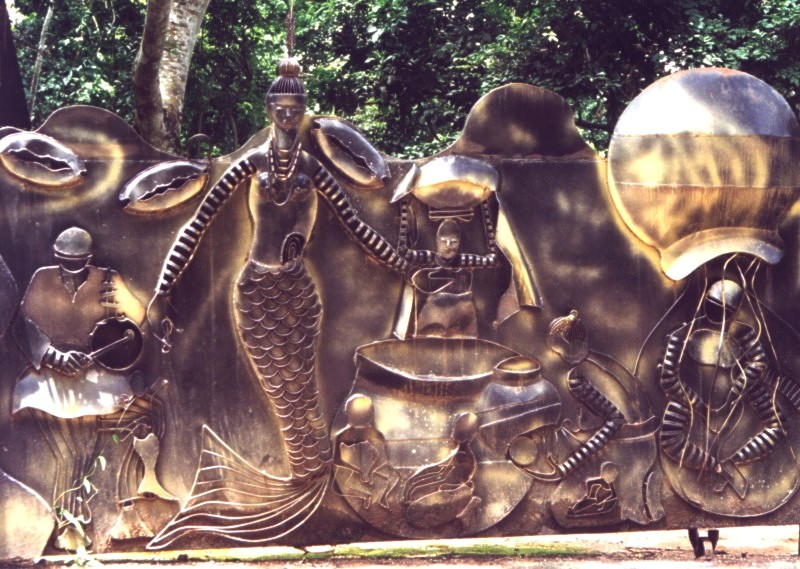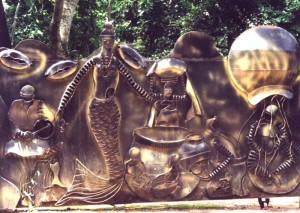By Nehi Igbinijesu

The Osun-Osogbo Sacred Grove is one of the remnant primary high forests that survived the urbanization of Yorubaland. Situated along the banks of the Osun River, just outside the city of Osogbo, the grove plays host to thousands of Osun worshippers and tourists who come yearly to celebrate the Osun- Osogbo Festival.
A century ago there were many sacred groves in Yorubaland: every town had one. Most of these groves have now become desolate or have shrunk to quite small areas. Osun-Osogbo, in the heart of Osogbo, the capital of Osun State, founded some 400 years ago in southwest Nigeria, and 250 km from Lagos is the largest sacred grove to have survived and one that is still revered.
Through the forest meanders the river Osun, the spiritual abode of the river goddess Osun. Set within the forest sanctuary are forty shrines, sculptures and art works erected in honour of Osun and other Yoruba deities, many created in the past forty years, two palaces, five sacred places and nine worship points strung along the river banks with designated priests and priestesses
The new art installed in the grove has also differentiated it from other groves: Osogbo is now unique in having a large component of 20th century sculpture created to reinforce the links between people and the Yoruba pantheon, and the way in which Yoruba towns linked their establishment and growth to the spirits of the forest.
It is believed that the restoration of the grove by artists has given the grove a new importance: it has become a sacred place for the whole of Yorubaland and a symbol of identity for the wider Yoruba Diaspora. The sacred grove was listed as a UNESCO World Heritage Site on July 15, 2005 in recognition of its cultural relevance and global significance.


